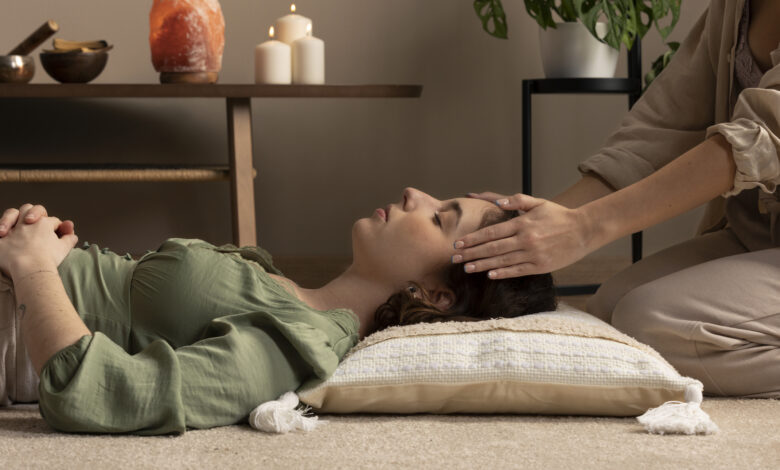5 Ancient Therapies That Are Making a Comeback in Modern Wellness

With an increasingly hectic lifestyle, people are focusing a lot on wellness, trying to keep both their physical and mental health in check. However, wellness isn’t a new concept; many of the trendy therapies are, in fact, rooted in traditions centuries old. And these are making a comeback to promote holistic health, stress management, and natural healing.
To maintain optimum health in ancient times, people used to engage in certain holistic practices. Further, every region and culture has its own holistic wellness practice, starting from Ayurveda in India and Acupuncture in China to Hydrotherapy, which came from Roman baths and Japanese hot springs. Owing to the perfect balance between science and tradition, these are gaining significant popularity.
Let’s take a deep dive into the 5 ancient therapies that are revolutionizing modern wellness.
1. Ayurveda: India’s Ancient Healing Science
Ayurveda is an ancient science rooted in the 5000-year-old Vedic tradition. It sees the human body as an interconnected system that runs on the three fundamental bio-energetic forces known as doshas (Vata, Pitta, and Kapha).
Ayurveda prioritises the balance of mind, body, and spirit. The practitioners use direct questioning, observation, and taking the pulse of the patients to diagnose their ailments. Then they prescribe herbal remedies, lifestyle changes, dietary modifications, Ayurvedic massage, and cleansing practices to restore health.
The modern revival of Ayurveda makes use of personalised nutrition plans combined with herbal remedies and detox practices. For many, it is also the way of life for people who wish to enjoy a healthy, balanced, and illness-free life in harmony.
2. Acupuncture: Traditional Chinese Medicine
Acupuncture has a 2,500-year-old history, the foundation of which lies in traditional Chinese medicine. This lays stress on the balanced flow of qi (vital energy) through the body’s meridians, which is essential for health. Further, traditional Chinese medicine believes that an imbalance in Qi will lead to illness.
In Acupuncture, the energy flow (Qi) through meridians is stimulated using needles. This restores the body’s interconnectedness and overall wellness.
In modern therapeutic wellness, Acupuncture is used for pain management, stress relief, and fertility treatments.
3. Cupping Therapy
A form of alternative medicine, Cupping Therapy’s origin is tied to Egypt, China, and the Middle East. The treatment is designed to treat sore and worn muscles, neck and back pain, migraines, arthritis, skin diseases, lower cholesterol, and improve immune function.
In Cupping Therapy, suction cups made of glass, earthenware, bamboo, or silicone are used to improve circulation, remove toxins, and relieve pain. There are two main types, i.e., dry cupping and wet cupping.
First, a flammable material is applied to your skin, and once the fire goes out, the cup is placed. The cooling air inside the cup creates a vacuum, which makes the blood vessels expand and the skin rise. The difference between the two is that in the wet cupping method, small cuts are made to draw blood and attract inflammatory cells.
Alongside ayurvedic massage and acupuncture, this has turned into a modern wellness trend with popular athletes and celebrities endorsing it..
4. Meditation and Breathwork (Pranayama)
The ancient roots of yoga, meditation, and breathwork lie in Buddhist practices. Pranayama, particularly, is a yogic breathing practice that many use to calm their mind and improve physical and mental well-being.
The primary benefits offered by meditation and breathwork include an increase in mental clarity, reduced anxiety, and improved lung function. All the person has to do is sit in a well-ventilated area that has fresh air, adopt a comfortable (but not slouched) posture, take deep breaths, and exhale slowly.
The modern adaptation of pranayama is often seen in practice in corporate wellness retreats and mental health therapy.
5. Hydrotherapy
Hydrotherapy is any treatment procedure that uses water. In history, it has adopted numerous forms like Roman baths, Greek spas, and Japanese onsen culture. People use this alternative treatment method to treat cramps, pain, stiffness, bruising, swelling, etc.
The popular hydrotherapy practices include hot-cold immersion, steam therapy, and mineral baths. These can provide symptomatic relief to those suffering from osteoarthritis, spondylitis, multiple sclerosis, Parkinson’s disease, cerebral palsy, and fibromyalgia.
Though this is not a prescribed treatment method, modern wellness retreats often offer hydrotherapy alongside physiotherapy, Indian head massage, ayurvedic massage, and other treatments for physical and mental rejuvenation.
Other Alternative Wellness Therapies
Alongside these popular wellness therapies, a few others are also gaining popularity. These include:
Naturopathy
Naturopathy combines popular therapies like acupuncture and massage with a balanced diet and lifestyle changes to promote and restore health.
Indian Head Massage
Rooted in Ayurveda, Indian head massage focuses on areas that are prone to stress, such as the scalp, face, neck, shoulders, and upper back, massaging with warm, herb-infused oils to relieve tension and stress, and improve circulation.
Aromatherapy
A sought-after holistic treatment, aromatherapy involves a gentle massage with essential oils to reduce stress and promote relaxation and good sleep.
Deep Tissue Massage
Available as Balinese, Hawaiian, and Swedish deep tissue massages, all of these aim to improve circulation, relieve stress, and balance the body.
Reflexology
Also called zone therapy, this involves applying pressure to the extremities (hands and feet) to send a calming message through the central nervous system. Along with promoting relaxation, it also reduces pain and stress.
Final Word
Ancient therapies such as ayurvedic massages, cupping therapy, Indian head massage, and acupuncture aren’t outdated. Instead, they are being reimagined for the needs of today’s society to offer physical and mental rejuvenation. They address stress, immunity, and chronic pain and promote overall well-being.
Experiencing Holistic Wellness in Daily Life
Looking to integrate holistic wellness into your lifestyle? Explore the above-mentioned therapies and more safely by consulting professionals.



